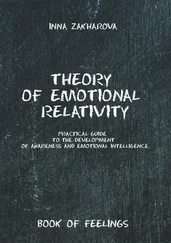The needs of humankind
Advertising responds to our needs
Substitute dealings
The basis of our being
The plausibility of the basic rights of existence
Following the rules of play of the system
Learning to live the basic rights of existence
The development of human beings
The pyramid as a symbol of human development
Automatic mechanisms
The virtuoso in the element
Training camp
Learning thanks to subjective perception
Objectivity and subjectivity
The glasses model
Objectives
Definition of objectives
Partial objectives
Compatibility of objectives
Pursuing different types of objectives
The hierarchy in personal objectives
Concentration of strengths
Objectives as self-motivation
Objectives as an aid to success
Pursuing our own objectives
Tasks
Decisions
Perceptive ability
Awareness
The model of the awareness sphere
Right of self-determination and self-responsibility
Carrying responsibility
How far does our responsibility reach? Awareness of responsibility
The principle of self-responsibility
If I cannot assess the consequences of a decision
Responsibility is somewhat individual
Consequences from the acceptance of tasks
The consequences of being overtaxed by a task
Co-responsibility
My personal contribution
The interaction between objectives and abilities
The model of the tuning bowls
Abilities and objectives influence one another
Interactions with our surroundings
1 + 1 = 3: Abilities in a group
The priorities of objectives
The seminar effect
Manipulation of other people
Nature will help us
Success monitoring
About missionary work
Time for change
Stumbling blocks
Hectic and pill mentality
We have everything under control
Globalization and the mass media
Denial of reincarnation
Words are simpler than deeds
Missing or incorrect success monitoring
Review
If you would like more
What drives us as human beings? Why do we exist? What do we strive for? On the pages which follow we would like to offer subjects for thought and information on these and other questions. We set out the bases for all existence on the earth and discuss the consequences for life in private and business areas.
Amongst other things we describe how we can achieve constant harmony and inner peace. The right choice and deliberate pursuing of our own, self-selected goals take on a key role in this so that we can achieve our own goals and not let ourselves be manipulated by others.
The theme addressed here is extremely comprehensive. It is not sufficient to simply read a book on the subject. This contribution is therefore intended in particular to stimulate thoughts about our own lives, which goals we should set for ourselves in our lives and how best to achieve them.
For simplicity all the formulations have been written in the male form. This is not intended to be discriminatory, all conclusions and examples also apply without restriction to the female gender.
Niederurnen, January 2016
Jürg Rohrer
Why do most of us human beings go to work each day, why do we live with a partner, why do we have children? What are we trying to achieve in all of this? What indeed are we striving for? Is it merely to obtain food, to procreate, or do we want to purchase as many objects as possible, possess company shares, make careers for ourselves, go down in history, exercise power over others?
Much has already been written on the objectives and origins of human actions, we want here therefore to extract what we believe to be the most important of the different theories and to add our own thoughts to this.
In general it is assumed that in the final analysis all human beings have comparable needs. According to which of these needs have already been satisfied, according to age, the experiences of life and the culture, each person however sets his own priorities for the priorities which are still open in different ways. The best known here is probably the representation of these needs and priorities in the form of a Maslow pyramid (Maslow‘s needs pyramid). Maslow put forward the theory that human beings assign clear, hierarchical priorities to their individual needs. As soon as a person has reached a particular level in his own needs pyramid, the need to achieve the next higher level is aroused. As representative of the many other approaches to this theme we will take a brief look at the individual elements of this Maslow pyramid.
1 Human beings initially set their priorities according to their existential needs such as food, clothes and sleep. If the existential needs are not met survival is threatened and life itself is in danger.
2 If the existential needs are satisfied the need for safety is awakened: The desire for protection from the risks to life such as war, sickness, accident, environmental catastrophes etc. take centre ground.
3 The next level in the priority pyramid according to Maslow concerns the social needs: The human being wants to be with like-minded people, he wants to be accepted and loved.
4 The following level is concerned with self-regard and the esteem of other people: The human being wants to strengthen his self-confidence and for this purpose seeks regard and recognition from other people.
5 The top objective is the need for self-realization: The human being wants to be able to be himself and to permanently be able to experience inner peace, happiness and harmony.
As already indicated the needs of man have frequently been investigated and described, the needs pyramid can be refined, modified and supplemented at will. We can also – with good justification – ask ourselves, whether for example the achievement of the third step is really a necessary precondition for the fourth or fifth steps. For our purposes it is not particularly meaningful to generalize the needs of man too strongly. In spite of this: Whoever observes human beings sees that in spite of their individuality the great majority of people set very similar priorities within a particular economic and cultural area. Very very similar indeed – the more we look at it.
However each person usually finds that his needs priorities change during the course of his life. Older people set many of their priorities differently from younger people. We don’t want to go into the many types of human needs in any more detail. Astonishingly in virtually all investigations into the motives for human actions two great commonalities are found:
Existential needs are the first priority.It is certainly clear that not only the human being but also in general every being upon the earth first of all seeks the resources necessary for survival, in particular food and an environment in which it is actually possible to live.
The top priority level is that of inner harmony.The more the other human needs are satisfied the stronger is aroused the desire for a perpetual state of happiness, harmony, security, inner peace and calmness. Humans like to be themselves everywhere and at all times and at the same time wish to be fully accepted and to feel loved.Since this concerns an abstract idea of the quality of life this state is difficult to describe. Religions for example describe this as entry to heaven, the achievement of nirvana, a life of unconditional love, total peace on earth, breaking out of the cycle of reincarnation etc.
The highest objective of life is actually not so surprising. Once we accept that the needs described above are «somehow» attainable, must not such a state be glorious? Just imagine you are constantly in a state where nothing can worry you ever again, where you are completely satisfied and calm. You can feel love and radiate love. No sickness, no accidents, no quarrels, no cares, simply just harmony.
Читать дальше












